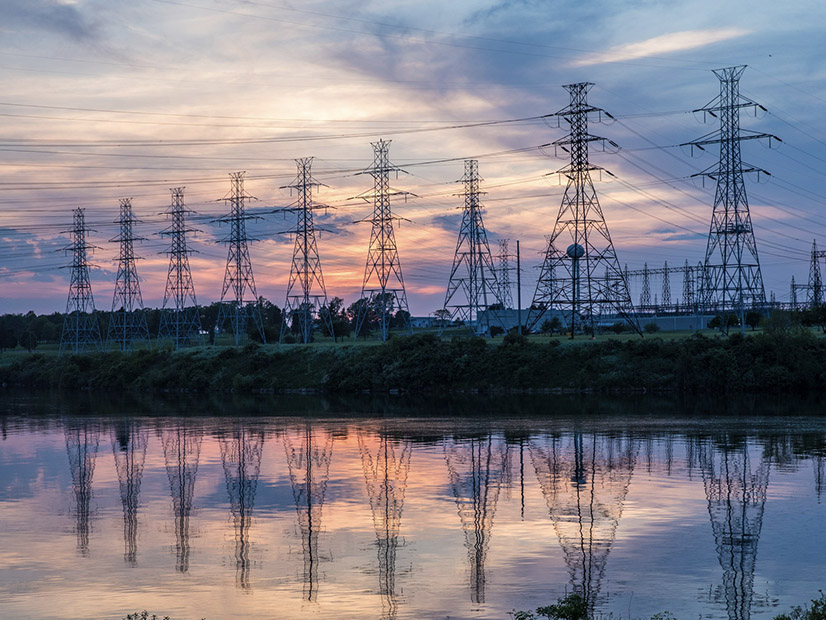FERC on Thursday approved the compliance filings of six transmission providers, including those of NYISO and CAISO, with Order 881, though it found that most of them had failed to sufficiently explain their timelines for calculating and submitting their required ambient-adjusted line ratings (AARs).
Issued in December 2021, and upheld in May 2022, Order 881 directed transmission providers to end the use of static line ratings in evaluating near-term transmission service, and implement AARs for short-term service and seasonal ratings for long-term service (RM20-16). (See FERC Orders End to Static Tx Line Ratings.)
FERC did not specify a specific timeline by which transmission providers must submit their ratings, but it did order them to submit their own in their compliance filings. The commission had argued that providers “already manage similar timing issues” regarding other topics such as load forecasts, renewable energy production and generation bid deadlines, and that deadlines for AAR calculation and submission should be “not significantly different” from those they already calculate.
But though it approved their filings, the commission found that Arizona Public Service (ER22-1863), Black Hills Power (ER22-2303), Louisville Gas & Electric and Kentucky Utilities (ER22-2305), and Tampa Electric (ER22-1546) each failed to include such a timeline.
NYISO (ER22-2350) said that it expects to calculate AARs on a 48-hour basis, with submissions by transmission owners to be provided to the ISO hourly. But it also told FERC that it and TOs are “still developing technical procedures describing the mechanics of AAR submissions,” the commission said.
However, in each of these five cases, FERC acknowledged that “these timelines may not be determined until closer to AAR implementation and therefore that additional time may be necessary to comply with this requirement.” NYISO and the four utilities will need to submit another compliance filing by Nov. 12, 2024, ahead of their deadline for implementation of July 12, 2025.
In Tampa Electric’s case, the commission also took issue with the utility’s proposal to backdate its table of contents changes to June 1, 2022. FERC said this plan “could cause confusion because it would reference a section of [its tariff] that is not in effect.” To prevent potential misunderstandings, FERC set the table of contents revisions to take effect on the same day as the new tariff. However, the commission did suggest it was open to a future filing from the utility explaining why an earlier effective date would be justified.
“Our Order No. 881 compliance orders are bright points in today’s meeting,” Commissioner Allison Clements tweeted that afternoon. “They represent the beginning of a bigger opportunity to squeeze more juice out of our existing system at a relatively minimal cost to customers, using grid-enhancing technologies.”
NYISO
The commission had also ordered RTOs and ISOs to create systems and procedures to allow transmission owners to electronically update transmission line readings at least hourly and give TOs the ability to use more advanced dynamic line rating technology, which takes into account more factors than just air temperature when calculating ratings, if they choose.
FERC found that both NYISO and CAISO mostly complied with these directives. But both did not adequately explain certain definitions, the commission said.
Although NYISO provided for seasonal line ratings, it did not “define ‘seasons’ to include no fewer than four seasons in each year,” FERC said. The commission also nixed the ISO’s proposal that its TOs, rather than itself, were responsible for sharing transmission facility ratings and methodologies. NYISO has until June 19 to submit a compliance filing correcting these two deficiencies.
NYISO had also proposed revising its day-ahead market congestion settlement procedures to quantify the impacts of when the ratings employed in the market differed from those used in transmission congestion contract auctions. But FERC rejected this proposal as well, though without prejudice, noting that NYISO could file these revisions as a separate proposal.
“While the commission in Order No. 881 acknowledged a connection between the transmission line rating requirements and financial transmission rights markets, the commission declined to direct any changes to financial transmission rights markets, and therefore these revisions fall beyond the scope of this compliance proceeding,” FERC said.
CAISO
CAISO’s (ER22-2362) proposal only partially complied with Order 881’s requirement that transmission providers post line rating exceptions or temporary alternate ratings on its Open Access Same-Time Information System or another password-protected website, FERC said. And the ISO’s proposed definition of “transmission line ratings” fell short of the order’s requirements, it found.
The ISO had proposed defining “transmission line rating” as the “maximum transfer capability of a transmission line, computed in accordance with a written transmission line rating methodology and consistent with good utility practice, considering the technical limitations on conductors and relevant transmission equipment (such as thermal flow limits), as well as technical limitations of the transmission system (such as system voltage and stability limits).”
“CAISO asserts that the definition encompasses transmission line ratings for electric system equipment that includes more than just overhead conductors … [such as] circuit breakers, line traps and transformers,” FERC noted. But the commission said the definition needed to reflect the order’s wording.
“While CAISO states that its proposed definition encompasses electrical system equipment beyond just overhead conductors, we find that the absence of tariff specificity renders the proposed definition unclear on this point,” the commission said.
FERC said CAISO’s proposal also only partially complied with Order 881’s requirements for designating exceptions and alternate line ratings.
“CAISO proposes to coordinate with [participating transmission owners] in their development of exceptions or alternate ratings for both near-term and longer-term transmission service for the set of circumstances set forth in the pro forma” tariff, the commission noted. “However, CAISO does not propose tariff language stating that exceptions will be re-evaluated by the transmission provider at least every five years, nor does CAISO explain the absence of such language.”
FERC gave CAISO until June 19 to submit another compliance filing for these failings.
Michael Brooks contributed to this report.


